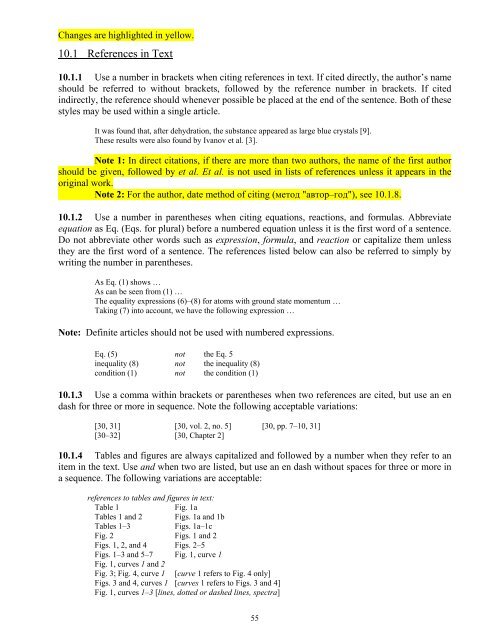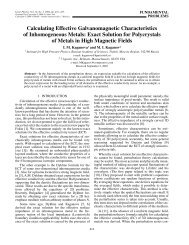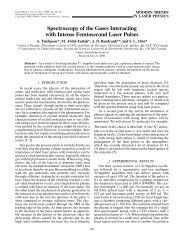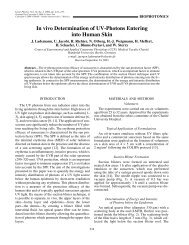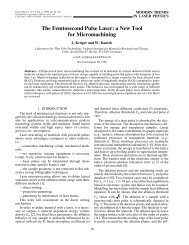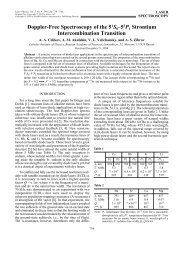House Style Guide 2011 - MAIK "Nauka/Interperiodica"
House Style Guide 2011 - MAIK "Nauka/Interperiodica"
House Style Guide 2011 - MAIK "Nauka/Interperiodica"
- TAGS
- maik
- www.maik.ru
You also want an ePaper? Increase the reach of your titles
YUMPU automatically turns print PDFs into web optimized ePapers that Google loves.
Changes are highlighted in yellow.<br />
10.1 References in Text<br />
10.1.1 Use a number in brackets when citing references in text. If cited directly, the author’s name<br />
should be referred to without brackets, followed by the reference number in brackets. If cited<br />
indirectly, the reference should whenever possible be placed at the end of the sentence. Both of these<br />
styles may be used within a single article.<br />
It was found that, after dehydration, the substance appeared as large blue crystals [9].<br />
These results were also found by Ivanov et al. [3].<br />
Note 1: In direct citations, if there are more than two authors, the name of the first author<br />
should be given, followed by et al. Et al. is not used in lists of references unless it appears in the<br />
original work.<br />
Note 2: For the author, date method of citing (метод "автор–год"), see 10.1.8.<br />
10.1.2 Use a number in parentheses when citing equations, reactions, and formulas. Abbreviate<br />
equation as Eq. (Eqs. for plural) before a numbered equation unless it is the first word of a sentence.<br />
Do not abbreviate other words such as expression, formula, and reaction or capitalize them unless<br />
they are the first word of a sentence. The references listed below can also be referred to simply by<br />
writing the number in parentheses.<br />
As Eq. (1) shows …<br />
As can be seen from (1) …<br />
The equality expressions (6)–(8) for atoms with ground state momentum …<br />
Taking (7) into account, we have the following expression …<br />
Note: Definite articles should not be used with numbered expressions.<br />
Eq. (5) not the Eq. 5<br />
inequality (8) not the inequality (8)<br />
condition (1) not the condition (1)<br />
10.1.3 Use a comma within brackets or parentheses when two references are cited, but use an en<br />
dash for three or more in sequence. Note the following acceptable variations:<br />
[30, 31] [30, vol. 2, no. 5] [30, pp. 7–10, 31]<br />
[30–32] [30, Chapter 2]<br />
10.1.4 Tables and figures are always capitalized and followed by a number when they refer to an<br />
item in the text. Use and when two are listed, but use an en dash without spaces for three or more in<br />
a sequence. The following variations are acceptable:<br />
references to tables and figures in text:<br />
Table 1 Fig. 1a<br />
Tables 1 and 2 Figs. 1a and 1b<br />
Tables 1–3 Figs. 1a–1c<br />
Fig. 2 Figs. 1 and 2<br />
Figs. 1, 2, and 4 Figs. 2–5<br />
Figs. 1–3 and 5–7 Fig. 1, curve 1<br />
Fig. 1, curves 1 and 2<br />
Fig. 3; Fig. 4, curve 1 [curve 1 refers to Fig. 4 only]<br />
Figs. 3 and 4, curves 1 [curves 1 refers to Figs. 3 and 4]<br />
Fig. 1, curves 1–3 [lines, dotted or dashed lines, spectra]<br />
55


